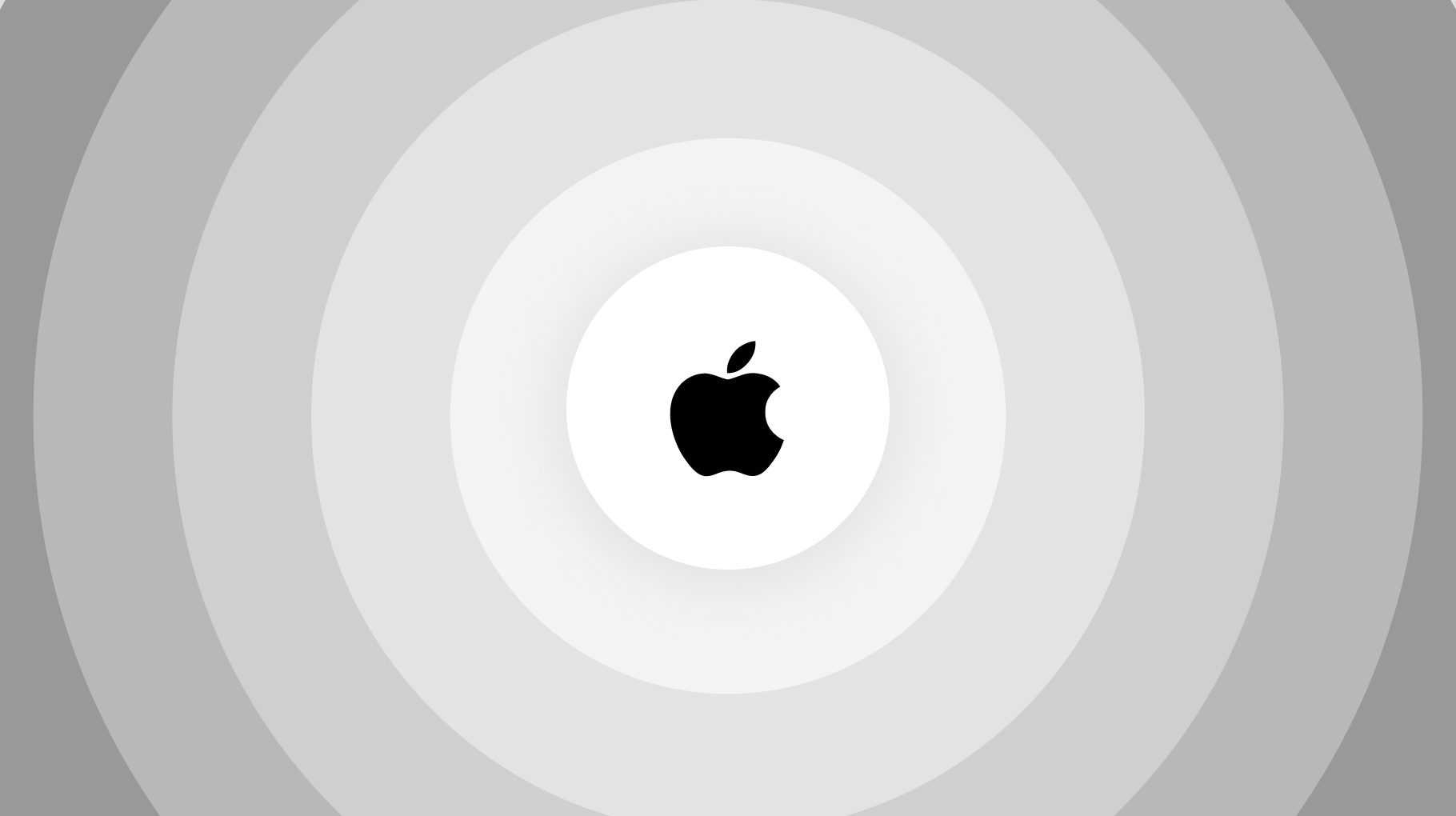Apple Revenue and Growth Statistics (2024)

Amazing facts about Apple
- As of 2022, Apple products continue to dominate the global market, with a majority of sales coming from the Americas at 41.6%
- As of March 2023, Apple’s market cap is at an astounding $2.490 trillion, which is a testament to its remarkable success in the tech industry
- In 2022, Apple made history by becoming the first company ever to reach a market value of $3 trillion
- In the 2022 financial year, Apple’s net sales amounted to $394.33 billion, a staggering figure that reflects the company’s continued dominance in the technology industry
- In the first quarter of their 2023 fiscal year, Apple, reported record-breaking revenue of $117.15 billion, surpassing Wall Street’s expectations
- In the 2022 financial year, Apple brought in a staggering $205.5 billion from iPhone sales alone
- Apple has been able to capture a significant market share in the Americas, which is reflected in the net sales of $169.66 billion in the 2022 fiscal year from America alone
- In 2022, Apple had a record-breaking fiscal year, with a net income of $99.8 billion, the highest it has ever been
- In FY2022, Apple’s gross profit exceeded $170 billion, marking a significant increase from the previous year
- In the fiscal year 2022, Apple Inc. managed to generate a whopping operating income of approximately $119 billion
- In 2022, Apple had a total of 164,000 employees working across different departments, including engineering, design, marketing, and operations
- As of 2022, the Apple market share stood at 9.8%, indicating that the company has been able to maintain its competitive edge in the computer and technology industry
Apple Company Overview
Apple at a glance
Apple products include the iPhone, iPad, Mac, wearables, and home devices.
The company has experienced unparalleled revenue growth, with revenue increasing from $8 billion in 2004 to over $394 billion in 2022.
Apple dominates the wearable industry, holding around 30% of the market, and has entered the smart speaker and hearables markets.
Additionally, the company is working on a virtual reality headset and augmented reality smart glasses set to be released in 2023.
How many Apple products have been sold?
iPhone is Apple’s most popular product, in the 4Q of 2018 alone, Apple sold an impressive 217.73 million units of iPhones.
Their other signature products, the iPad and Mac computer, also did well, with 43.5 million and 18.21 million units sold respectively in 2018.
After the FY2018 report, Apple decided not to publicly report the number of devices they sell anymore.
Source: Statista
Apple product sales by region (Apple Market Share by region)
As of 2022, Apple products continue to dominate the global market, with a majority of sales coming from the Americas at 41.6%.
The European market also showed strong sales, accounting for 24% of Apple’s total global sales. In addition, the Asian market also showed an increase in sales at 26.5%, indicating a growing demand for Apple products in the region.
Finally, other countries also contributed to the global sales of Apple products, sharing about 7.9% of the company’s total sales. This impressive sales data suggests that Apple’s strategy of producing high-quality, innovative products continues to resonate with consumers around the world.
As such, it will be interesting to see how Apple’s sales figures evolve in the coming years and whether the company will be able to maintain its position as a global leader in the technology industry.
Source: Apple
Apple Market Cap
As of March 2023, Apple’s market cap is at an astounding $2.490 trillion, which is a testament to its remarkable success in the tech industry.
With its innovative products and services, Apple has consistently captured the attention and loyalty of its customers worldwide. Its market dominance is reflected not only in its financial performance but also in its ability to shape and influence the industry as a whole.
As a result, Apple has become the world’s most valuable company by market cap according to our data, a title that is well-deserved given its impressive achievements and continued growth.
Source: Companies Market Cap
How much is Apple worth? (Valuation)
In 2022, Apple made history by becoming the first company ever to reach a market value of $3 trillion. This is a remarkable achievement for Apple and highlights its dominance in the tech industry. While some might argue that such a high market value is unsustainable in the long run, it cannot be denied that Apple has consistently delivered high-quality products and services to its customers.
Looking ahead, Apple is poised to continue its growth trajectory. In the first quarter of 2023, it is estimated that Apple will reduce its market value to $2 trillion. This reduction is not necessarily a cause for concern, as it could be a result of a variety of factors, such as market fluctuations or changes in consumer demand. Regardless of the reasons, Apple has proven time and again that it can adapt to changing circumstances and remain a leader in the tech industry.
Apple Revenue
In the 2022 financial year, Apple’s net sales amounted to $394.33 billion, a staggering figure that reflects the company’s continued dominance in the technology industry. This impressive performance can be attributed to several factors, including the release of new products such as the iPhone 13 and the MacBook Pro with M1 Pro and M1 Max chips, which have been met with rave reviews from both consumers and critics alike.
Furthermore, Apple’s strong brand reputation and loyal customer base have contributed to its success, with many customers willing to pay a premium price for Apple’s high-quality products. In addition, the company has continued to invest heavily in research and development, allowing it to stay at the forefront of innovation and maintain its competitive edge.
Overall, Apple’s 2022 financial year has been a tremendous success, and the company looks poised to continue its upward trajectory in the years to come.
Source: Statista
Apple revenue by fiscal quarters
In the first quarter of their 2023 fiscal year, Apple, reported record-breaking revenue of $117.15 billion, surpassing Wall Street’s expectations.
This impressive revenue was largely driven by strong sales of the iPhone 13, which was released in September 2022 and features a new A17 Bionic chip, an improved camera system, and longer battery life.
In addition, Apple’s services business, which includes the App Store, Apple Music, and iCloud, also saw significant growth, with revenue up by 28 percent year-over-year. Despite supply chain challenges caused by the ongoing pandemic, Apple’s strong financial performance indicates that the company has successfully navigated the challenges of the last two years and remains a dominant player in the tech industry.
Source: Statista
Apple revenue by products sold
In the 2022 financial year, Apple brought in a staggering $205.5 billion from iPhone sales alone.
This was followed by $40.18 billion in revenue from Mac sales, $29.29 billion from iPad sales, $41.24 billion from Wearables, Home, and Accessories sales, and an impressive $78.13 billion from Other Services sales.
The sheer volume of revenue generated by Apple’s various products and services is a testament to the company’s success in the tech industry.
Apple revenue by products sold per fiscal quarters
During the first quarter of the 2023 financial year, Apple performed exceptionally well in terms of earnings.
According to their financial report, the company generated a total of $66.8 billion in revenue from iPhone sales alone. This is a significant improvement from the previous year when they only made $54.4 billion from iPhone sales.
Additionally, they also managed to make $7.74 billion from Mac sales, $9.4 billion from iPad sales, and $13.48 billion from Wearables, home, and accessories sales. These numbers indicate that Apple’s product line is still in high demand, and people are willing to invest in their technology. Furthermore, Apple’s Other Services sales also contributed to its revenue, accounting for a total of $20.77 billion.
Overall, Apple’s first-quarter earnings are a positive sign for the company, and it shows its continued success in the tech industry.
Source: Statista
Apple revenue by region
Apple has been able to capture a significant market share in the Americas, which is reflected in the net sales of $169.66 billion in the 2022 fiscal year.
The company has been able to achieve this through its innovative products and services, which have been well-received by consumers in the region. However, this has not been without its challenges, as the company has faced intense competition from other tech giants in the market.
Despite this, Apple has continued to invest in research and development, which has enabled it to stay ahead of the curve and deliver products that meet the evolving needs of its customers.
Additionally, the company has also focused on expanding its distribution network and improving its after-sales service, which has helped to strengthen its relationship with consumers in the region.
Overall, Apple’s success in the Americas can be attributed to its ability to adapt to changing market conditions and deliver products and services that resonate with its customers.
Apple revenue by region per Fiscal quarter
Apple, one of the most valuable companies in the world, has a significant presence in many global markets.
The Americas, in particular, are the company’s largest regional market, contributing a substantial $49.28 billion in net sales during the first quarter of the 2023 fiscal year. This is a testament to the popularity and reach of Apple’s products in the region.
However, Europe and Asia are also crucial markets for Apple, with net sales of $27.68 billion and $30.67 billion respectively. These two regions have their unique characteristics and demands, and Apple has successfully navigated these complexities to establish itself as a dominant player in the global technology market.
Overall, Apple’s success in these markets is a result of its innovative products, strategic marketing, and excellent customer service.
Source: Statista
Apple Net Income
In 2022, Apple had a record-breaking fiscal year, with a net income of $99.8 billion, the highest it has ever been.
This remarkable achievement can be attributed to the company’s continued innovation and success in the tech industry. Throughout the year, Apple’s global revenue also soared to $365.82 billion, a significant increase from the previous year.
This impressive growth is a testament to the company’s ability to adapt to changing market conditions and maintain its position as a leader in the industry. It is clear that Apple’s commitment to providing high-quality products and services continues to pay off, as evidenced by its strong financial performance in 2022.
Source: Statista
Apple Gross Profit
In FY2022, Apple’s gross profit exceeded $170 billion, marking a significant increase from the previous year.
This milestone was achieved as a result of strategic investments in research and development, marketing, and acquisitions. The company’s focus on innovation and customer satisfaction has allowed it to maintain a competitive edge in the fast-paced technology industry.
Additionally, Apple’s commitment to sustainability and corporate responsibility has garnered positive attention from consumers and investors alike.
Overall, Apple’s success in FY2022 can be attributed to a combination of strategic decision-making and a strong brand reputation.
Source: Macro Trends
Apple Operating Income
In the fiscal year 2022, Apple Inc. managed to generate a whopping operating income of approximately $119 billion.
This is an impressive achievement for the company and a testament to its continued success in the tech industry. With innovative products like the iPhone, iPad, and MacBook, it’s no surprise that Apple has been able to maintain such a strong financial position.
Additionally, Apple’s commitment to sustainability and improving working conditions in their supply chain has also contributed to its positive reputation and customer loyalty.
As the company looks toward the future, it will be interesting to see how they continue to innovate and expand its product offerings in order to maintain its competitive edge in the market.
Source: Macro Trends
Apple Fundings
Apple Inc. is a technology company that is renowned worldwide for its innovative products such as the iPhone, iPad, and Mac computers. The company is headquartered in Cupertino, California, and was founded in 1976 by Steve Jobs, Steve Wozniak, and Ronald Wayne.
Apple has been highly successful in its fundraising efforts, having raised a total of $6.2 billion over seven funding rounds to date. The company’s latest funding round was held on June 15, 2022, and was a Private Equity round. This round of funding is expected to help Apple continue its growth trajectory and expand its product offerings even further.
In addition to its successful fundraising efforts, Apple has also been recognized for its commitment to sustainability and social responsibility. The company has taken steps to reduce its carbon footprint and improve working conditions for employees throughout its supply chain.
Overall, Apple’s success can be attributed to its innovative products, strong leadership, and commitment to responsible business practices. As the technology industry continues to evolve, Apple is well-positioned to remain a leader in the field and continue to shape the future of technology.
Source: CrunchBase
Apple Funds Raised
Apple has successfully raised a substantial amount of money, with the total amount coming to $375 million across two funds.
The latest of these, the European tet fund, was announced on January 15th, 2022, and was able to raise an impressive $75 million.
This is a significant achievement for Apple and shows the company’s continued ability to attract investment from a wide range of sources. It is clear that the company is highly valued by investors, and this is a testament to the strength of its business model and leadership team.
It will be interesting to see how Apple uses this funding to further its growth and development in the coming months and years.
Perhaps we can expect to see new products and services emerge as a result of this latest round of fundraising.
Source: CrunchBase
Apple Investors
Apple is one of the most valuable companies in the world, with a market capitalization of over $2 trillion dollars as of 2021. The company was founded by Steve Jobs, Steve Wozniak, and Ronald Wayne in 1976 and has since become a leader in the technology industry, producing innovative products such as the iPhone, iPad, and Mac computers.
To fuel its growth and development, Apple has received funding from a variety of investors, including 7 investors. The most recent investors in Apple include Interscope Records and Berkshire Hathaway, who have provided financial support to the company in order to help it continue to innovate and expand its reach in the market.
Source: CrunchBase
Apple Investments
Apple has made 29 investments in various companies, in order to diversify their portfolio and explore new business ventures.
The tech giant has been actively seeking opportunities to invest in startups that show potential for growth and innovation. One of their most recent investments was on Mar 8, 2023, when gamma, a startup focused on developing cutting-edge technology for the healthcare industry, raised $1 billion.
This investment is part of Apple’s larger strategy to expand its presence in the healthcare sector, which they see as a key growth area for the company in the coming years.
Apple’s investment in gamma is expected to help the startup accelerate its research and development efforts and bring new healthcare products and services to market more quickly.
Overall, Apple’s investment strategy has been focused on finding innovative companies with high potential for growth and supporting them with the resources and expertise they need to succeed in their respective fields.
Source: CrunchBase
Apple Acquisitions
Apple has a long history of acquiring companies to expand its business.
Since its inception, they have acquired a total of 128 organizations, each acquisition contributing to its success. Their most recent acquisition, Credit Kudos, was made on Mar 23, 2022, and is a testament to Apple’s continued commitment to growth and innovation.
By acquiring Credit Kudos for a whopping $150 million, Apple has demonstrated its willingness to invest in cutting-edge technology and talent in order to stay ahead of the curve.
This acquisition is expected to bring significant benefits to Apple, including expanded capabilities and increased market share.
Source: CrunchBase
How many Apple device production facilities are there?
Apple Inc. has a vast network of production facilities, comprising around 615 units spread across numerous countries, including China, the Czech Republic, Malaysia, Thailand, and South Korea, among others.
Each of these production facilities plays a crucial role in Apple’s supply chain management, ensuring that high-quality products reach customers worldwide in a timely and efficient manner. For instance, China, the world’s largest producer of electronic components, is responsible for operating 156 of these facilities, which manufacture a wide range of Apple products, including iPhones, iPads, and MacBooks, among others.
The Czech Republic, too, operates several such units, which are primarily involved in the production of iPhone screens.
Meanwhile, Malaysia and Thailand host a range of manufacturing units that specialize in assembling electronic components and testing finished products before shipping them to various destinations worldwide.
South Korea, on the other hand, is known for its advanced semiconductor technology and skilled workforce, which helps Apple in manufacturing innovative products that incorporate cutting-edge technology.
Source: Apple
How many people work at Apple?
In 2022, Apple had a total of 164,000 employees working across different departments, including engineering, design, marketing, and operations.
These employees are located in various parts of the world, from the company’s headquarters in Cupertino, California to its offices and retail stores in countries such as China, Japan, and the United Kingdom. In addition to its regular employees, Apple also hires contractors and temporary workers to support its projects and operations, further expanding its reach and impact on the global workforce.
Despite its large employee base, Apple continues to maintain a strong focus on innovation and creativity, as evidenced by its many successful products and services that have revolutionized the technology industry.
Source: Macro Trends
How does Apple make money? (Apple Business Model)
Apple Inc. is a multinational technology company that specializes in designing, developing, and selling various consumer electronics, software, and online services.
The company has a wide range of products that includes smartphones, personal computers, tablets, wearables, and accessories. Apple’s business model is based on innovation and consumer-centric devices, resulting in a loyal customer base that is attracted to easy-to-use designs and data migration to new product lines.
Apple’s iPhone is the company’s most popular product and accounts for the majority of the company’s revenue. In addition to hardware sales, Apple generates revenue through services such as the App Store, Apple Music, and iCloud.
The company’s success can be attributed to its ability to consistently deliver high-quality products that meet the needs and desires of its customers.
Furthermore, Apple’s commitment to innovation has allowed it to stay ahead of the curve and maintain its position as a leader in the technology industry. As a result, Apple has become one of the most valuable companies in the world with a market capitalization of over $2 trillion.
Where are Apple products available for sale? (What countries are Apple products sold in?)
Apple Inc. is a multinational technology company headquartered in Cupertino, California, that designs, develops, and sells consumer electronics, computer software, and online services.
The company’s hardware products include the iPhone smartphone, the iPad tablet computer, the Mac personal computer, the iPod portable media player, the Apple Watch smartwatch, the Apple TV digital media player, and the HomePod smart speaker.
These products are sold through Apple’s online store, retail stores, and third-party resellers around the world.
Apple’s software products include the macOS and iOS operating systems, the iTunes media player, the Safari web browser, and the iWork and iLife creativity and productivity suites. The company’s online services include the iTunes Store, the App Store, and iCloud.
In addition, Apple offers various accessories for its products, such as cases, covers, keyboards, and mice. Apple is widely recognized for its innovative and stylish designs, user-friendly interfaces, and high-quality products.
Who are the founders of Apple?
Ronald Wayne, Steve Jobs, and Steve Wozniak founded Apple on April 1, 1976. The three pioneers of the tech industry came from humble beginnings and worked tirelessly to make their vision a reality.
Ronald Wayne, who initially provided administrative oversight during Apple’s very first days, met Jobs while working at Atari. Although Wayne sold his 10% share for a mere $800 less than two weeks after founding Apple, the company went on to become one of the most successful tech companies in history.
This decision may have cost Wayne millions of dollars, but it allowed him to pursue other interests. Despite his brief stint at Apple, Wayne will always be remembered as one of the original co-founders of the company that changed the world.
Source: Tech Spot
What is the net worth of Apple founders?
What is Apple’s market share in the computer and technology industry?
As of 2022, the Apple market share stood at 9.8%, indicating that the company has been able to maintain its competitive edge in the computer and technology industry.
Source: Statista
Number of users: Top countries using Apple products
According to recent data, the United States has the largest population of Apple product users, with over 32% of all Apple products sold in the country. Japan accounts for 5.67%, China for 4.69%, the United Kingdom for 4.53%, Canada for 3.64%, and Others for 49.01%.
Source: Similar Web
How many apps on Apple App Store?
In 2022, the Apple App Store had over 7.9 million apps available, which shows how popular it is.
Source: Statista
Who are Apple’s device users (Demographic)
Apple’s device users by gender
The data shows that the majority of Apple device users are male at 61.11%, while only 38.89% are female.
This discrepancy could be attributed to a number of factors, such as differences in marketing strategies, societal expectations, and norms, or even differences in interest in technology between genders.
Despite the disparity in gender distribution, Apple’s continued success and popularity among both male and female users is a testament to the quality and innovation of its products.
In the future, it will be important for Apple to consider ways to make their products more accessible and appealing to female users in order to increase diversity and inclusivity within their customer base.
Source: Similar Web
Apple’s device users by age
The largest age group of users for Apple devices falls within the 25-34-year-old range.
This demographic has been particularly drawn to the sleek design and user-friendly interface of these devices, as well as the seamless integration with other Apple products.
Additionally, this age group may appreciate the high-quality camera and video capabilities of Apple devices, as well as the extensive range of apps and services available for download.
Overall, the popularity of Apple devices among 25-34-year-olds serves as a testament to the brand’s ability to consistently deliver innovative and appealing products to this key demographic.
Source: Similar Web
What are Apple’s other products and services?
The Company’s products include a wide range of devices that cater to different needs across a variety of domains. These devices are designed to enable individuals to seamlessly integrate technology into their daily lives, thereby augmenting their overall experience.
The iPhone, for instance, is a flagship product that has revolutionized the mobile phone industry with its cutting-edge features and sleek design.
Similarly, the Mac and iPad offer powerful hardware and software capabilities that cater to the needs of professionals and casual users alike.
The AirPods and Apple Watch, on the other hand, are designed to complement these devices by providing an immersive audio experience and a range of health and fitness features.
The HomePod and Beats products are perfect for audiophiles who demand unparalleled sound quality, while the iPod touch remains a timeless classic that continues to captivate music enthusiasts across the globe.
Additionally, the Company’s accessories are designed to enhance the functionality and aesthetics of these devices, giving users the ability to truly personalize their experience.








